You might’ve come across product-market fit under the alias of ‘product/market fit' or even just simply ‘PMF’. But whether its written with a forward slash, acronym, or hyphen, it all means the same thing.
In this article, we explore the depths of its definition and beyond. We provide you with all the key tools and granular insight you need to become a product-market fit pro.
Grab yourself a drink ☕️ and make sure you’re sitting comfortably because we’ve got a fair bit of ground to cover, including:
- What product-market fit actually is
- Why you need a strong PMF strategy
- How to achieve product-market fit
- Measuring the success of your PMF
What is product-market fit?
Product-market fit happens when you're in a good market with a product that can satisfy that market. Marc Andreessen, who popularized the term in 2007, describes it as the moment when "customers are buying the product just as fast as you can make it."
At its core, product-market fit represents the alignment between what you're building and what your market actually needs. It's when your value hypothesis—the key assumption about why customers will use your product—proves true in the real world.
Think of it this way: you've identified a specific problem that keeps your target customers up at night, and your product solves it so well that they can't imagine going back to their old way of doing things. That's product-market fit.
In practical terms, it's the intrinsic combination of two major things:
- The demand for your product (the gap in the market you've identified)
- How your product satisfies this appetite and plugs that gap (features, pricing, etc)
It's all about honing in on your target demographic and then providing that niche audience with a must-have solution to a problem they collectively experience.
The value hypothesis
Andy Rachleff, who coined the term product-market fit, explains that finding it starts with a value hypothesis. This hypothesis articulates three critical elements:
- The features you need to build
- The audience that's likely to care
- The business model that will entice customers to buy
Your value hypothesis is essentially your bet on what combination of product, market, and business model will create a must-have solution. Companies often go through many iterations before their value hypothesis proves correct—if it ever does.
"A value hypothesis is an attempt to articulate the key assumption that underlies why a customer is likely to use your product. Identifying a compelling value hypothesis is what I call finding product/market fit." - Andy Rachleff.
This holy trinity of product marketing forms what Rachleff describes as the 'value hypothesis' of a product—your foundational bet on market demand and product solution.
Why is product-market fit important?
Entrepreneur, Marc Andreessen, describes PMF as being: “The only thing that matters”, because without an available space in the market for something to fit into, even the most impressive, well-designed, generously funded product will be a flop.
The strategic benefits of product-market fit

Product-market fit is an invaluable art to master because it sits at the intersection between you, your product(s), and your customer. Getting to grips with it will not only help you better understand your customer needs and how to meet them, it’ll also help boost that bottom line.
Nailing product-market fit means:
Sales, sales, and more sales
You’ve launched an awesome product into a great market that’s hungry for it so you start to see this reflecting in your revenue.
Customer churn is under control
Your customers stick around cause they like what they see (and they want to see more) so you start to see a downturn in attrition.
Positive customer feedback
Customers start shouting about how epic your product is and sharing their positive experiences. Et voila - the magic of word-of-mouth marketing.
Doesn’t it feel great when your customers start selling for you?
Who is responsible for product-market fit?
Product marketers and product managers are usually considered responsible for product-market fit. But achieving product-market relies on all departments sharing the responsibility to help achieve this.
How to measure product-market fit
Measuring product-market fit isn't just about gut feel—there are specific metrics and methodologies that can help you gauge where you stand.
The 40% rule
One of the most widely-used benchmarks comes from Sean Ellis, who suggests asking customers: "How would you feel if you could no longer use this product?"
If at least 40% say they would be "very disappointed," you've likely achieved product-market fit. This simple question cuts through vanity metrics to reveal genuine product dependency.
Quantitative indicators
Look for these measurable signals that suggest strong product-market fit:
- Organic growth rate: New users finding you without paid marketing
- Retention rate: With 71% of B2B buyers ready to jump ship, hanging on to 80–90% of customers each month screams strong product-market fit.
- Usage frequency: Customers engaging with your product daily or weekly
- Referral rate: Users actively recommending your product to others
Qualitative signals
Beyond the numbers, these behavioral indicators reveal product-market fit:
- Sales cycles get shorter as prospects quickly understand the value
- Customer support shifts from "how do I?" to "can you also?"
- Media and analysts start reaching out unsolicited
- Competitors begin copying your features
When multiple indicators align—both quantitative and qualitative—you can be confident you're approaching true product-market fit.

How to achieve product-market fit
As we said, finding PMF is a non-linear process. It's about exploration and discovery, and your findings will steer your strategy along the way.
That said, there's a systematic approach you can follow. Dan Olsen's Product-Market Fit Pyramid provides a proven framework that breaks down the journey into manageable steps:
Step 1: Define your target customer
Start by getting specific about who you're building for. Create detailed personas that go beyond demographics to include:
- Current pain points and workflows
- Jobs they're trying to accomplish
- Solutions they've already tried
The narrower your initial focus, the easier it becomes to build something they desperately want.
Step 2: Identify underserved needs
Through customer discovery and observation, uncover needs that current solutions don't adequately address. Look for problems where people have cobbled together workarounds or simply resigned themselves to the status quo.
The best opportunities lie where the problem is frequent, painful, and affects a reachable market.

Step 3: Define your value proposition
Your value proposition articulates how you'll meet those underserved needs better than alternatives. This isn't about listing features—it's about the unique way your product will improve customers' lives.
Focus on one core benefit initially. Every additional promise dilutes your message.
Step 4: Build your MVP
Create the minimum feature set needed to deliver your core value proposition. Your MVP should:
- Solve the primary problem adequately
- Be simple enough to build quickly
- Generate learnings about product-market fit
Resist the temptation to add "nice-to-have" features. Every addition delays your learning.
Step 5: Test and iterate
Put your MVP in front of target customers and measure their response. Use both qualitative feedback and quantitative metrics to assess fit.
If customers aren't enthusiastic, iterate on your solution—or reconsider whether you've identified the right problem. Each iteration should bring you closer to that magical moment when customers can't imagine life without your product.
Examples of product-market fit
Understanding how successful companies achieved product-market fit provides a roadmap for your own journey. Here are companies that found their fit—and the signals that proved it.
Spotify
Problem identified: Music piracy was rampant, but people still wanted convenient access to music without legal risks.
Solution: Free, legal music streaming supported by ads, with a premium option for ad-free listening.
PMF signals: Explosive user growth to 182 million paid subscribers, with users spending hours daily on the platform and evangelizing it to friends.
Airbnb
Problem identified: Travelers wanted affordable, unique accommodations while hosts needed extra income from unused space.
Solution: A trusted marketplace connecting hosts and guests, starting with air mattresses during conferences.
PMF signals: Organic growth through word-of-mouth, hosts and guests becoming repeat users, and the platform expanding beyond its original conference-overflow use case.
Netflix
Problem identified: People hated late fees, limited selection at video stores, and having to leave home to rent movies.
Solution: DVD-by-mail evolved into streaming, offering unlimited viewing without commercials or late fees.
PMF signals: Rapid subscriber growth, high retention rates, and traditional cable companies scrambling to create competing services.
Superhuman
Problem identified: Power users found email clients slow and cluttered, impacting their productivity.
Solution: The fastest email experience possible, with keyboard shortcuts and AI-powered features.
PMF signals: Over 40% of users saying they'd be "very disappointed" without it, extensive waitlist, and users paying $30/month for email.
HelloFresh
Problem identified: People wanted to cook healthy meals but struggled with meal planning, grocery shopping, and finding recipes.
Solution: Pre-portioned ingredients and recipes delivered weekly, removing all friction from home cooking.
PMF signals: 8.5 million active customers globally, high subscription retention, and customers sharing meals on social media.
Measuring success
Net Promoter Score
Net Promoter Scores (NPS) are an invaluable - and recommended - way to measure the success of your product-market fit when it comes to management tools. It’s the modern alternative to more traditional customer satisfaction research.
Through an NPS tool, you can ask your customers to rate how likely they are to use or recommend a product on a scale of 1-10. Your NPS is then calculated based on 3 different types of responses:
- Promotors - Those scoring 9-10 and likely to spread positive feedback and promote growth.
- Passives - Those scoring 7-8 and are therefore satisfied but still receptive to the lure of your competition.
- Detractors - Those scoring 0-6 and are presumably unhappy and therefore able to negatively impact you in some way.
This customer-led insight will give you a good sense of how strong your PMF is.
Customer advisory boards and feedback loops are also effective ways to tap into this kind of information.
Total addressable market
Total addressable market (TAM) is another method of measuring product-market fit which shows the total number of people who can benefit from your product. This is calculated by multiplying your average revenue per user (ARPU) by the total number of potential customers in the market.

After you achieve product-market fit
Aicha Zaa, Product Marketing Manager at Productsup, shares her advice on what to do after achieving product-market fit.
“Creating a good product that serves a substantial market is difficult, and only the first of many steps to becoming a successful startup.
“Reaching product-market fit is a significant milestone in the life of every startup.
“The next and last step is the scale (or growth) stage. During this period, teams start to think about processes and optimization.
“When many enterprise startups get to product-market fit, they feel they’re ready to take off.
“We have product-market fit! Let’s grow! Hire sales! Invest in marketing! Spend!”
“The unfortunate, frequent reality then kicks in...
“Instead of sales taking off, sales just bump along. The number of new customers grows sporadically, painfully disproportionate to the rapid increase in sales and marketing.
“Many enterprise startups get to product-market fit but don’t achieve growth and acceleration. Why? Because there’s a 'missing link' between product-market fit and accelerated growth for the enterprise startup journey.

Steps to finding go-to-market fit
Aicha Zaa shares her top tips for fining your go-to-market fit.
Understand the customer journey
“Start by identifying the urgent pain for the Ideal Customer Profile (ICP) that drives customers to buy now. The GTM fit begins with understanding the entire customer journey (CJ) and starts with the urgent pain for the Ideal Customer Profile and ends when your company becomes strategic to the customer.
“This is especially critical for SaaS startups, since signing the contract is only the beginning of the relationship with the customer, and so much of the business is based on renewals and upsells.

“The customer journey is the backbone of your entire go-to-market. Everything else is built on top of it.
“Fully comprehending the customer journey entails:
- Understanding the customer mindset
- Starting with the urgent pain
- Working out the full customer journey
- Ending by becoming strategic to the customer”
** Watch on-demand:**Be the voice of your customer >
Build the go-to-market playbook
“Once you’ve found the urgent pain for your Ideal Customer Profile (ICP) and understand the customer journey, how do you repeatedly find and win ICPs that have the urgent pain?
“This is where the go-to-market playbook comes in.
“The GTM playbook is a step-by-step, repeatable recipe to find and win deals over and over again. It becomes the blueprint for your marketing and sales teams. It becomes the bible for every new sales or marketing person to ramp. It becomes a powerful tool to align the rest of the team behind a go-to-market plan.
“The GTM playbook is the backbone for repeatable sales, and is the core of GTM Fit and unlocking growth.
“It’s that important.”
What does a GTM playbook look like?
“As we've established, the GTM playbook is a recipe to find and win customers over and over again. It has three main components:
- Customer journey stages: From urgent pain, to initial engagement, to win, to hero.
- GTM actions (for each stage): What’s done/said? Who’s involved? Exit criteria?
- GTM deliverables (for each stage): What does the rest of the company do/build to support that stage of the playbook?”
Operationalize the Playbook
“Unfortunately, the Go-to-Market Playbook doesn’t execute by itself. The GTM playbook needs an owner: the CEO.
“Why the CEO? The GTM Playbook cuts across marketing, sales, product, and customer success. It’s the most cross-functional project there is in a startup. The CEO is the only person with the visibility to see across the company — and the authority to get the whole company behind it.”
** Report download:PMM Perceptions Among the C-Suite >
“Moving through the stages of the GTM playbook is like a relay race — passing the baton from one leader/team to the next. Identify which department or function takes the baton for each stage of the playbook.
“Like a relay race, the handoffs are where races are won or lost: the baton is either smoothly handed to the next stage, or it’s fumbled.”
End-to-end metrics: growth & efficiency
“Here’s how you’ll know you’ve achieved go-to-market fit: you’ll just feel it. It feels like pure momentum — like you are surfing on a wave.
“You can also see it in the numbers. The two key metrics are net new ARR (which measures the growth) and the magic number (which measures the efficiency of the growth).
“Analytically, the magic number measures your go-to-market fit. Your magic number (new ARR divided by your marketing and sales spend) answers the question: how much do you grow for every dollar spent on sales and marketing (S&M)?
“If every dollar of S&M spend brings in more than one dollar of revenue, you’ve achieved GTM fit.
“But keep in mind that the magic number is a lagging indicator, and it may take you a few quarters to see a positive result.
“The end-to-end SaaS metrics give you the big picture about your go-to-market, and they’re main criteria when investors evaluate your GTM:
Net New ARR - How much ARR has increased/decreased from the period? It is the sum of all new ARR (such as lands, expands and upsells) minus the sum of all lost ARR (such as churn or contraction). In other words, how much are you growing?
“Magic Number - For every dollar spent on sales and marketing, how much new revenue did you generate? In other words, how efficient is your lead and land system? If this number is greater than 1, things are going well.
“The end-to-end SaaS GTM metrics are lagging indicators. They are the outcome of the GTM process — not tools to improve it. That’s why it’s important to remember: to tune up the playbook into a well-oiled machine, you need to look under the hood.”
Some final food for thought…
The important thing to remember about product-market fit is that you can lose it and it shouldn’t be taken for granted. Fail to listen to customer feedback, keep an eye on the competition and adapt in response, and your PMF can go down the toilet.
If you do feel your PMF has slipped or that your value hypothesis has changed, it’s time to keep pivoting until you consolidate it again. Reconfigure teams, change names, redefine the product - do whatever it takes to strike gold.
You should only start to scale-up once you’re product-market fit is rock solid.
It’s still a relatively new concept so the various definitions and processes floating around are pretty vast. You know us lot at here at PMA though, we’ll work our socks off to make sure you stay in the loop.
Ready to master product-market fit?
You've just learned the fundamentals of finding and measuring product-market fit. But turning theory into practice requires ongoing learning, proven frameworks, and real-world insights from successful product marketers.
That's where Pro+ Membership comes in. With access to 25+ certifications, exclusive templates, and a community of 50,000+ product marketers, you'll have everything you need to:
📊 Master market research techniques to truly understand your customers
🎯 Build positioning and messaging that resonates with your target market
🚀 Create go-to-market strategies that accelerate growth
💡 Access proven frameworks from companies that have nailed their PMF
Plus, get mentorship from PMMs at leading companies, attend exclusive events, and unlock 500+ hours of on-demand content covering every aspect of product marketing.
Level-up your skills and join thousands of product marketers who are already accelerating their careers with Pro+.





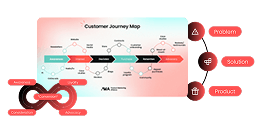




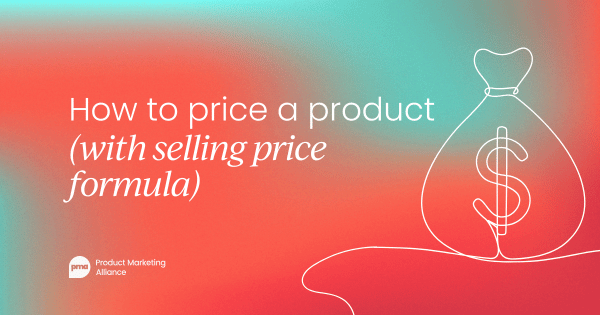

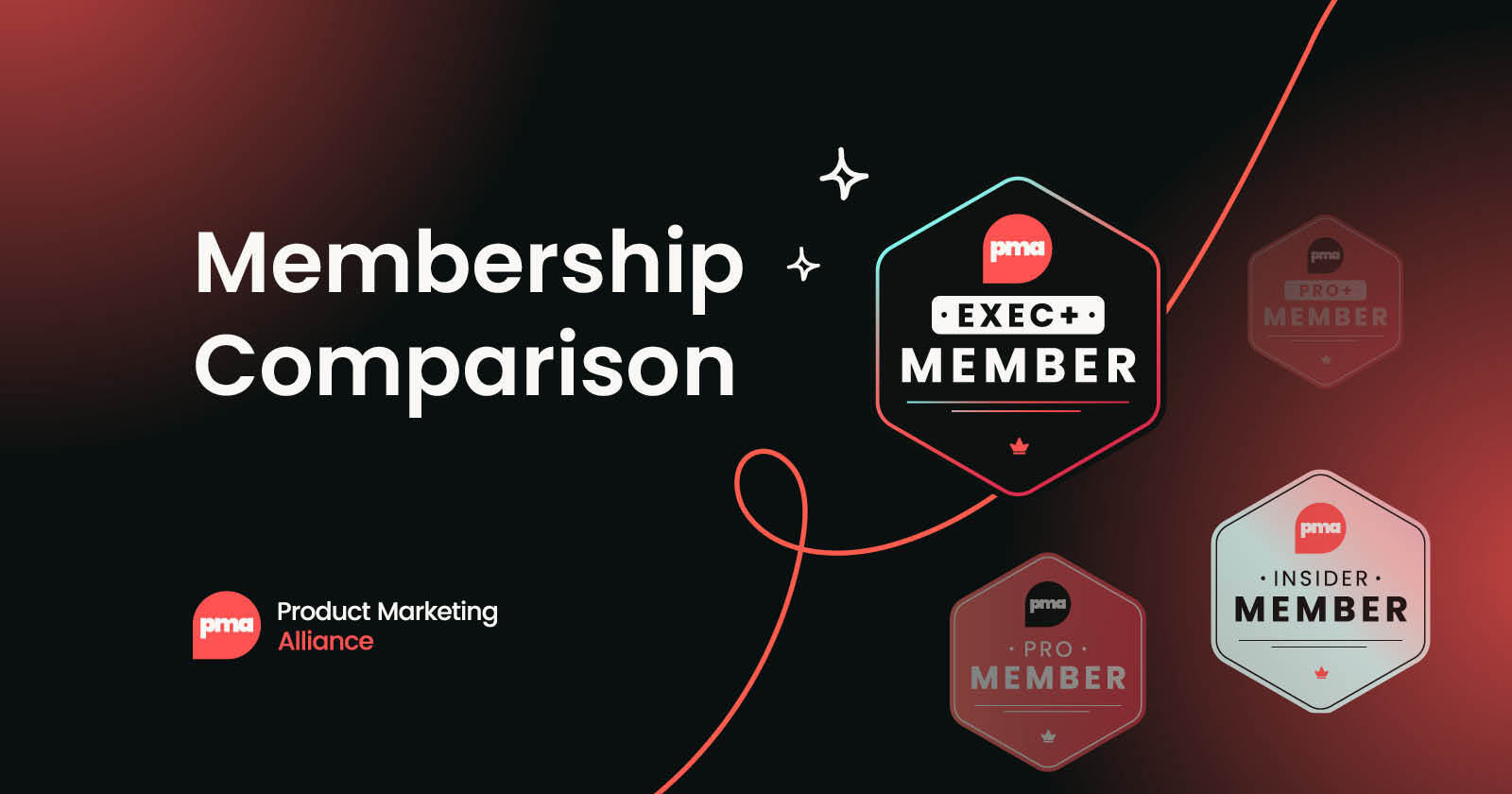
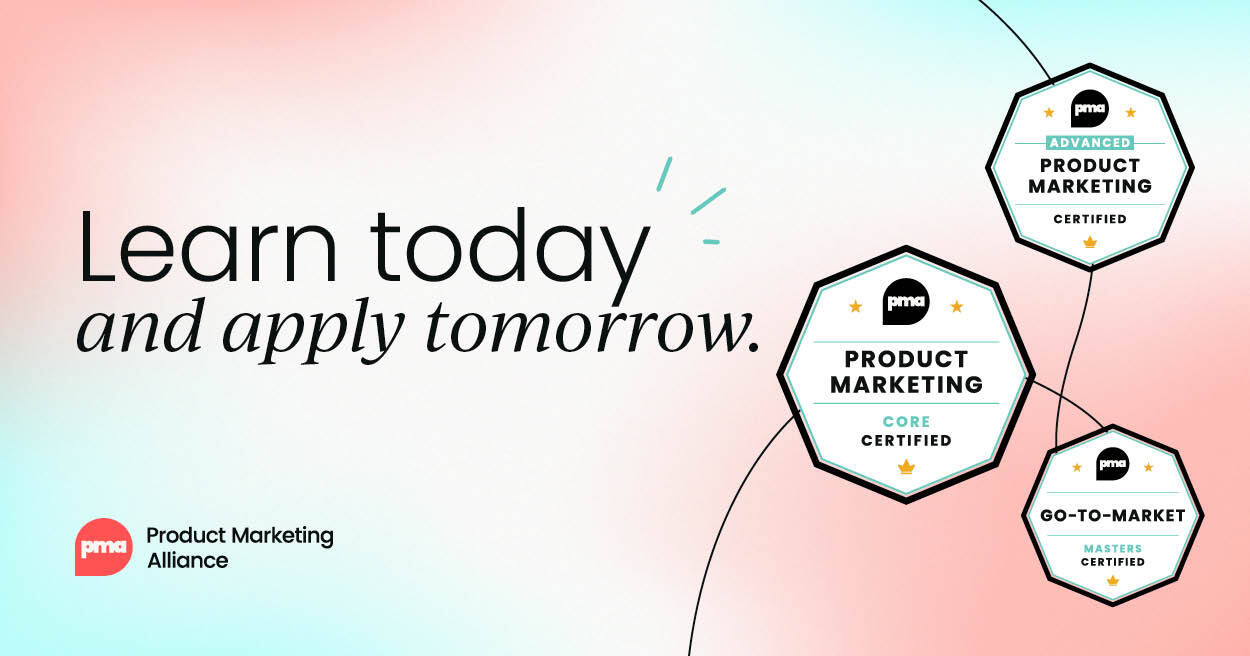
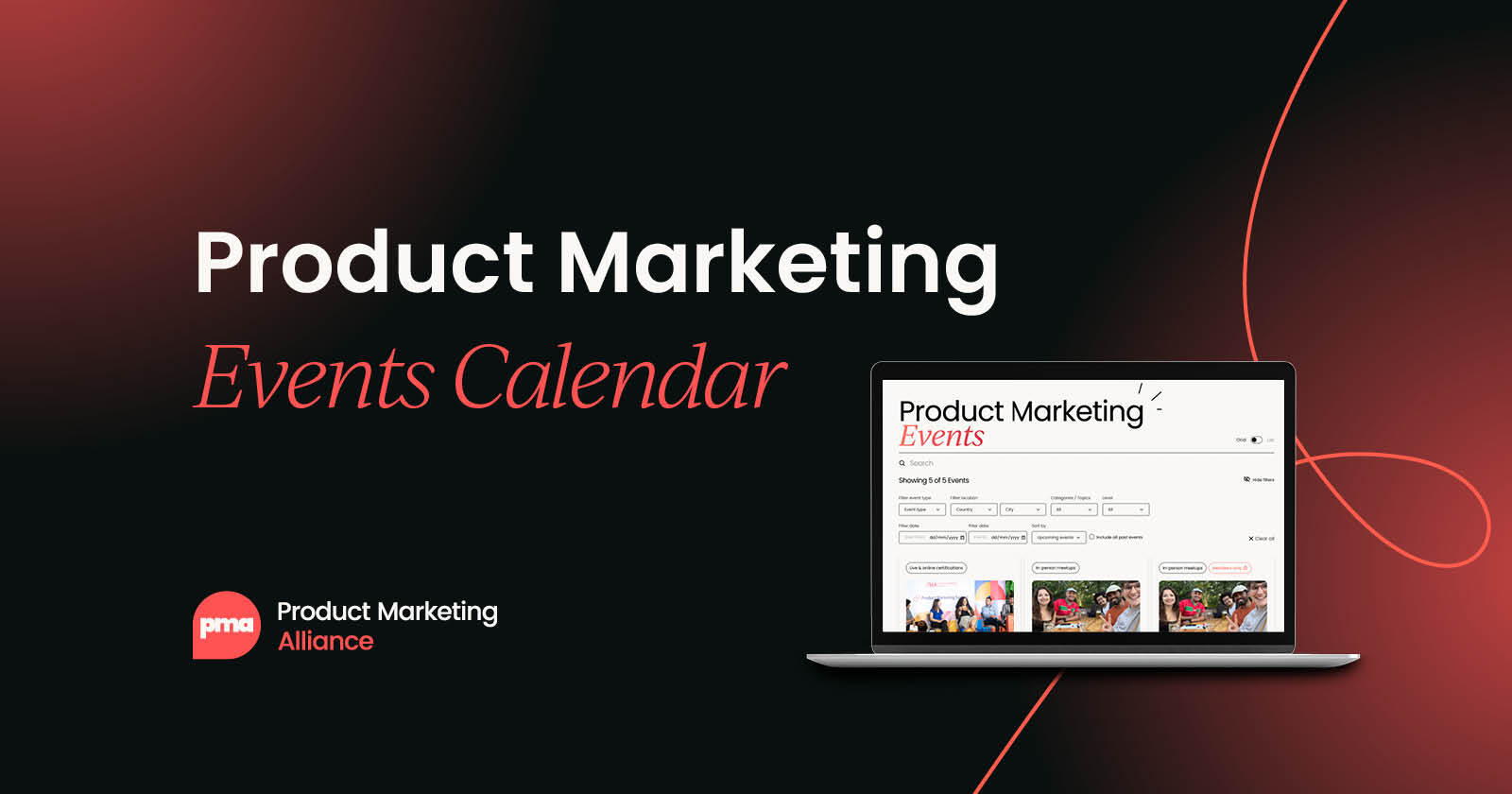


 Follow us on LinkedIn
Follow us on LinkedIn
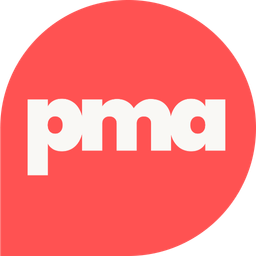
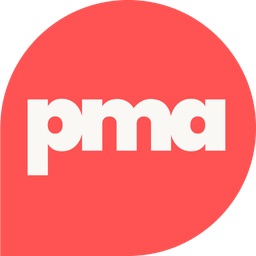





.svg)
Start the conversation
Become a member of Product Marketing Alliance to start commenting.
Sign up now